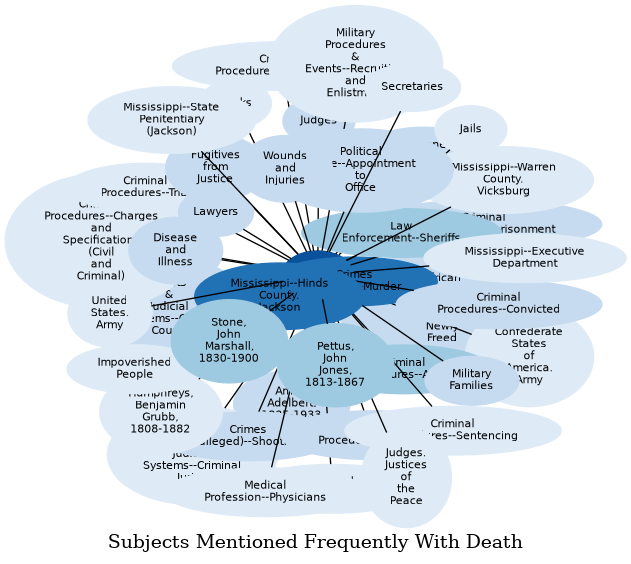Description
While the Cambridge Dictionary defines death as “the end of life,” CWRGM employs this subject tag to refer to human deaths only, both actual and hypothetical. (Cambridge Dictionary)
The nation experienced mass loss of life (approximately 2% of the population) during the American Civil War, which changed the way Americans viewed death and resulted in its reconceptualization in highly bureaucratized ways. Often wartime dead were buried without their names and sometimes in poorly-dug graves, which created a powerful, profound social and cultural dislocation for their surviving loved ones. During the 19th century, Americans understood dying as a social and religious experience, and desired a "good death," which they defined as at home surrounded by family, but these ideals were unattainable in war. Consequently, Americans learned to cope with death and memorialize it in new ways. Unionists encouraged the federal government and ex-Confederates pushed their respective state governments to create and fund national cemeteries, rebury deceases soldiers and veterans, and establish veterans' and widows' pensions. These new responses to death were more bureaucratized, nationalistic, and secularized. Wartime and post-war death was also highly impacted by race, as white supremacists desecrated the graves of Union buried in the South, especially the bodies of African Americans who served in U.S. Colored Troops and the white officers that led them, revealing post-war sectionalism and strains on reconciliation. (Drew Gilpin Faust, This Republic of Suffering)
See also: https://dictionary.cambridge.org/us/dictionary/english/death
Related Subjects

The graph displays the other subjects mentioned on the same pages as the subject "Death". If the same subject occurs on a page with "Death" more than once, it appears closer to "Death" on the graph, and is colored in a darker shade. The closer a subject is to the center, the more "related" the subjects are.